Table of Contents
ToggleNot everyone has heard of a beautiful hike to see the rare golden monkeys of Africa. Why golden monkey trekking is not so popular? Well, unfortunately for the golden monkeys, they chose to make their home in the high, cloudy volcanic forests in and around the Virunga Mountains. And these forests are also home to that most enigmatic of all primates: the mountain gorillas.
So, while all the monkey business focuses on gorilla trekking tourism and conservation, the golden monkeys play in the shadows with only few human visitors making the effort to go and see them.
However, golden monkeys are beautiful, endangered and rare as their gorilla cousins that we think you’ll love and want to visit once you know about them. Golden monkey trekking involves an exciting half-day hike in the Virunga Volcanoes to visit habituated troops of monkeys.
Here is a little information on these charismatic monkeys, where you can see them, why you should do a golden monkey trek before a gorilla trek, what it costs, how hard it is and why it is so rewarding.
What Do I Need To Know About Golden Monkeys?
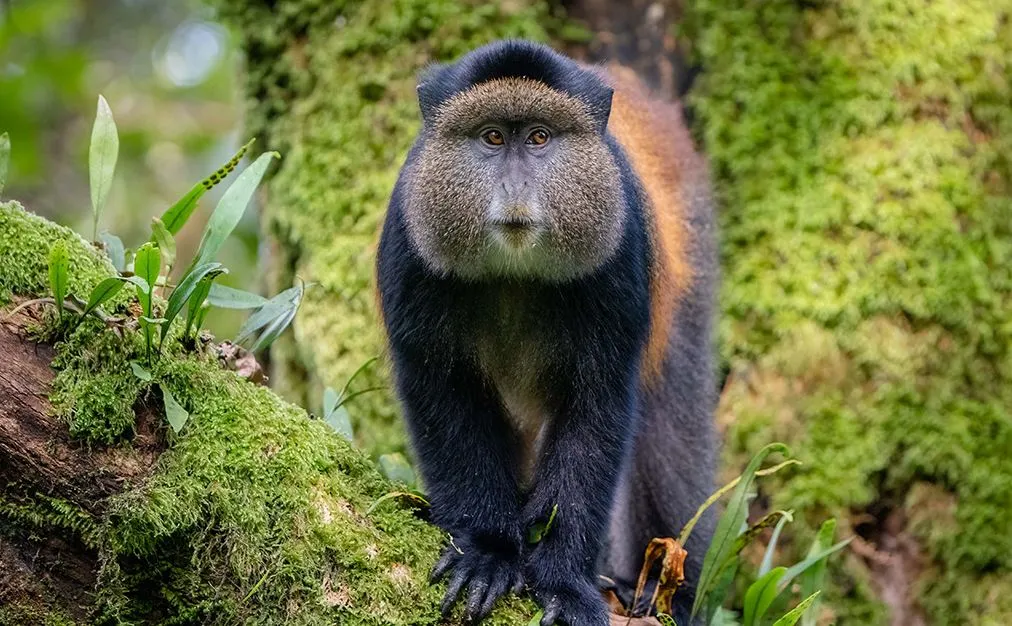
The golden monkey (Cercopithecus mitis kandti) is a subspecies of the wider-spread blue monkey which you can see in Kibale Forest, Nyungwe Forest, and other primate national parks of East Africa.
The Golden monkey is a very attractive Old World Monkeys with a round face, prominent brows, very whiskery cheeks and flat nose. It is a very endearing composition, wouldn’t you agree?
The monkey’s colouring is striking. It features a multi-coloured coat of rusty red, fiery oranges, shadowy blacks, tints of blue and, yes, even some gold. While the intensity of the orange-like fur varies from individual to individual (it is browner on some), it is easy to understand why they were named golden monkeys. Here are a few further interesting facts about golden monkeys:
- Golden monkeys mostly live in large troops of 60 to 100 individuals.
- They eat mostly bamboo shoots, leaves and branches.
- If you see some with short tails, sadly their long tails sometimes get stuck between bamboo trees.
Not to be confused with Golden snub-nosed monkeys.
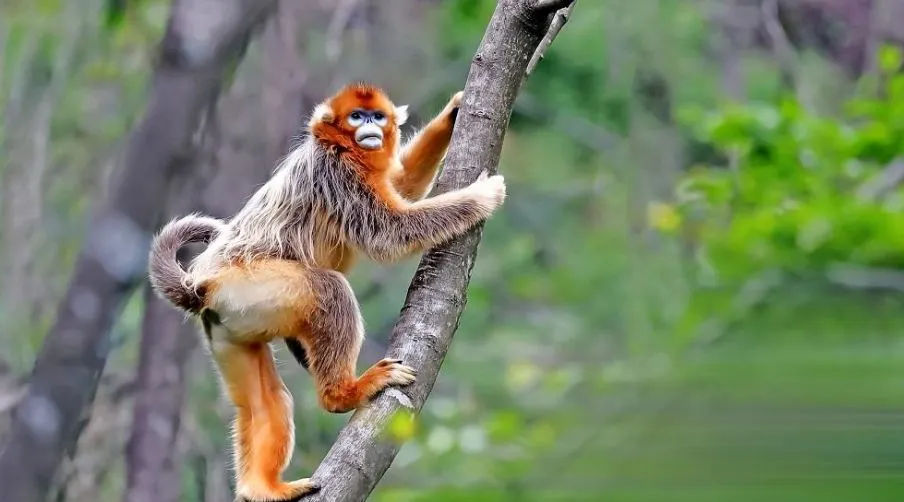
Finally, don’t get Africa’s golden monkeys confused with the Golden monkeys which are endemic to a small area in temperate, mountainous forests of central and Southwest China. The latter are appropriately called golden snub-nosed monkeys (Rhinopithecus roxellana) and have little in common beyond both being monkeys or primates.
Where do golden monkeys live?
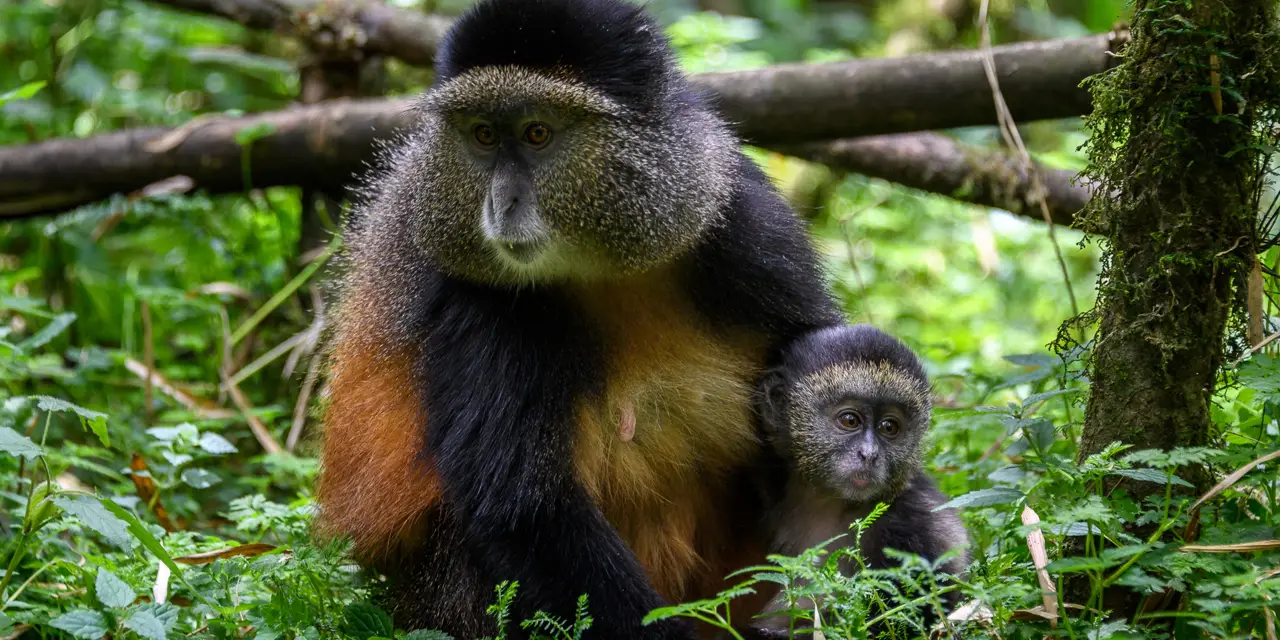
Golden monkeys live in the same forest ecosystem as mountain gorillas. Specifically, they are endemic the volcanic Virunga Mountains.
This means that you can only find them in the wild in this one area of the world. The Virungas are not a mountain range, but rather a chain of isolated freestanding volcanic cones strung along a fault line associated with the same geological process that formed the African Great Rift Valley.
The chain comprises six inactive and two active volcanoes, all of which exceed 3,000m in altitude – the tallest being Karisimbi (4,507m). Golden monkeys reside in the forests that cover the volcanoes’ slopes up till around 3,000 m above sea level (at which point moorland takes over).
The Virungas are shared by Rwanda, Uganda and DR Congo. In fact, one of the mountains – Mount Sabyinyo (3,669 meters) – sits in all 3 countries, with the peak being the spot where all of the borders meet. Golden monkeys spend much of their time in bamboo stands, as the trees form the bulk of their diet. The thick stands also offer protection from predators like eagles.
Where can I go golden monkey trekking?
While the gorgeous golden monkeys occur throughout the Virunga region, there are currently only two national parks with troops habituated for tourist visits:
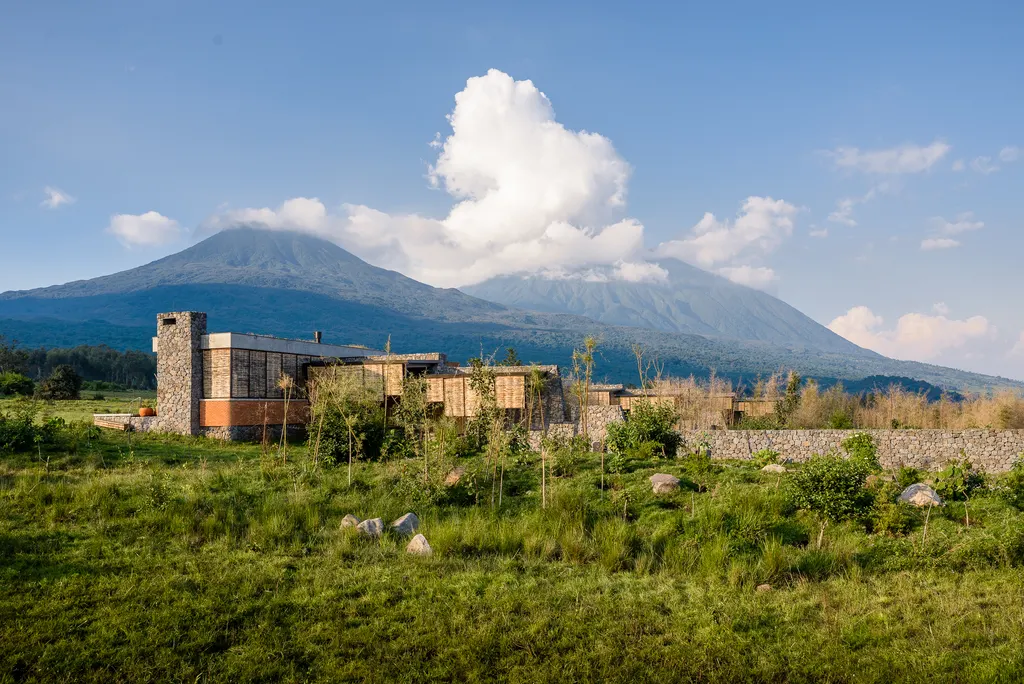
1. Mgahinga Gorilla National Park in Uganda
Despite the name, many visitors to Mgahinga would say that Uganda’s smallest national park actually offers better golden monkey trekking adventures than it does gorilla trekking tours.
There are 2 types of golden monkey tours on offer here. The standard tour gives you just an hour in the company of the little fellows and is similar to the golden monkey treks on offer in Rwanda.
More interesting and unique to Mgahinga Gorilla National Park, is the more in-depth Golden Monkey Habituation Experience. Golden monkeys here have been at the subject of a long-running study into their behavior. By signing up to this experience, you get to spend 4 hours in the presence of the monkeys and follow the scientists around as they study them.
Not just does this give you the chance to learn a huge amount about their behaviour, but it also offers a rare ‘behind the scenes’ insight into primate science.
2. Volcanoes National Park in Rwanda
While most visitors to Volcanoes National Park rush straight off after their gorilla visit, the more sensible choose to stay on in the park for another day and visit the rare golden monkeys.
The experience here is similar to the standard viewing offered at Mgahinga. There are 2 habituated troops. The larger, and most often visited troop, is Sabyinyo which consists of about 100 monkeys.
At Tulambule we offer golden monkey trekking in both Uganda and Rwanda. Please check out our Wildlife of Rwanda and Uganda itineraries if you are interested. Or if you would like to do the trek in Uganda, we can custom add that to one of our Uganda safari itineraries for you, no problem!
Why You Should Do A Golden Monkey Trek Before Your Gorilla Trek?
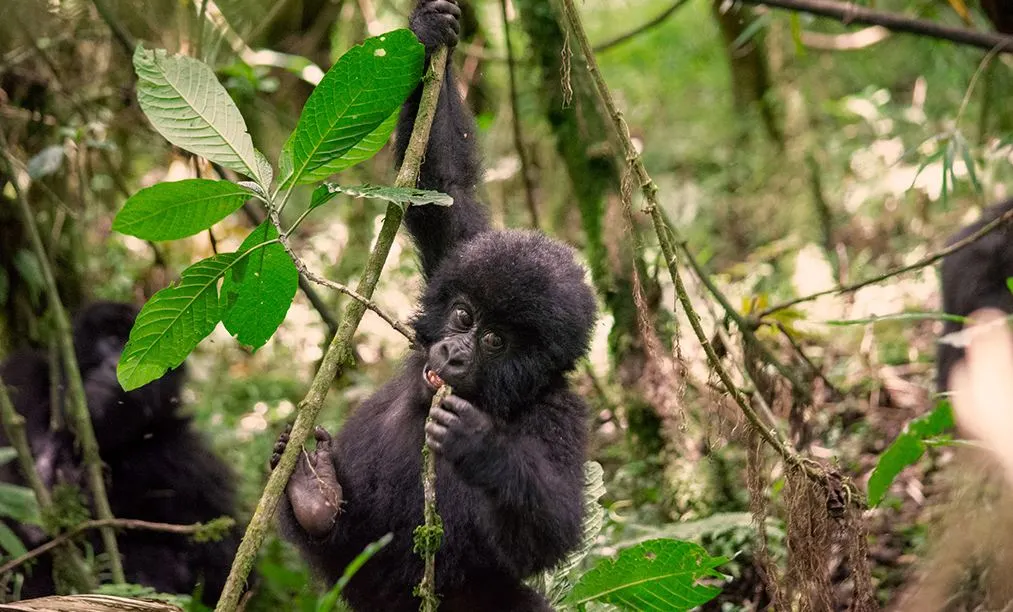
As noted above, Golden monkeys live in the same forest ecosystem as mountain gorillas. So, if you are heading to Volcanoes National Park or Mgahinga Gorilla National Park to go on a mountain gorilla trek, then we highly recommend that you also include a golden monkey trekking excursion onto your safari itinerary. Here are some of the reasons why;
1. Golden monkeys are endangered
While many people know that mountain gorillas are endangered, few know that golden monkeys are also endangered – mainly because they also don’t know that these monkeys exist.
In fact, the remaining golden monkey habitat is even smaller than that of mountain gorillas. Golden monkeys live only in the forests of the Virungas while mountain gorillas also live in Uganda’s Bwindi Impenetrable Forest National Park (which is a three-hour drive north of the Virungas).
We think it’s reasonable to presume that your enthusiasm for one endangered primate species will pique your curiosity about another? Both Volcanoes and Mgahinga rely on trekkers’ permit fees to help with their research and conservation efforts.
Therefore, even if it would be ideal for humans to leave all primates alone, know that your trek is helping to fund vital work that is in the best interests of the parks’ primates.
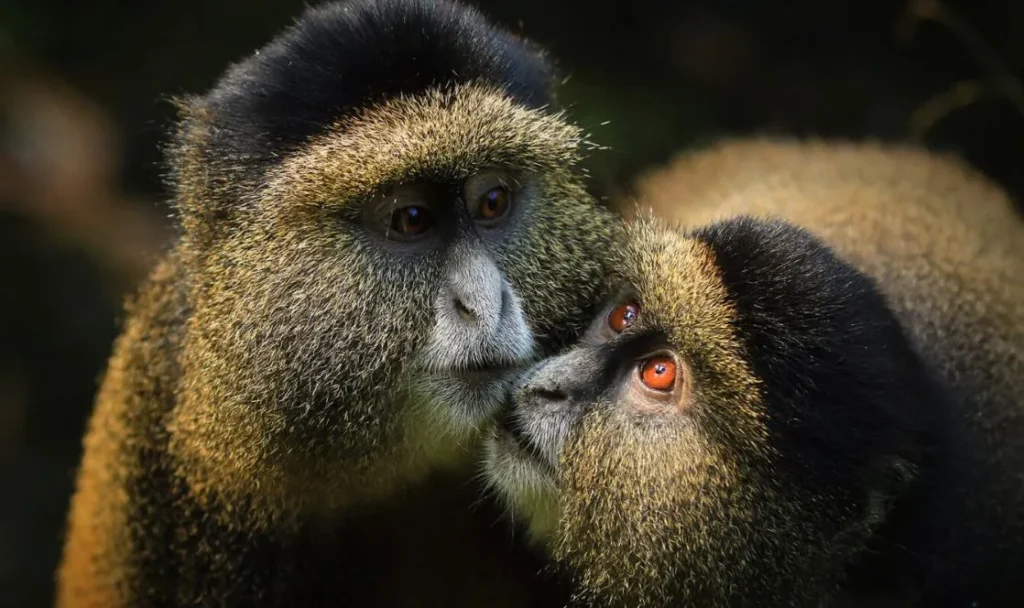
2. A golden monkey trek helps you to acclimatize
In Mgahinga Gorilla and Volcanoes National Parks, the lowest point is around 2,200 and 2,400 meters above sea level, respectively. On a golden monkey or gorilla journey, however, you do not hike up to any of the Volcanic Virunga peaks—far from it—but you do climb fairly high.
For example, you could trek up to 3,000 meters. And most people experience the unpleasant side effects of high altitude around 3,000 meters, especially if they had flown in from around sea level.
Golden monkeys tend to live in the lower areas of the Virunga forests. Or, to be more precise, the habituated troops that can be visited typically reside lower down on the volcano slopes.
On the other hand, families of Mountain Gorillas that are open to tourist visit are typically found chilling higher up in the forests. This means a golden monkey trekking tends be flatter, shorter and thus overall easier than gorilla trekking. You do not want to exert yourself too hard when you are busy adjusting to high altitude, as this just slows down the acclimatization process.
Therefore, it is a great idea, if possible, to spend a day or two in the Virunga Volcanoes becoming accustomed to the altitude before heading off on a gorilla trekking adventure. Thus, we propose that one of those ‘rest’ days could be dedicated to golden monkey trekking!
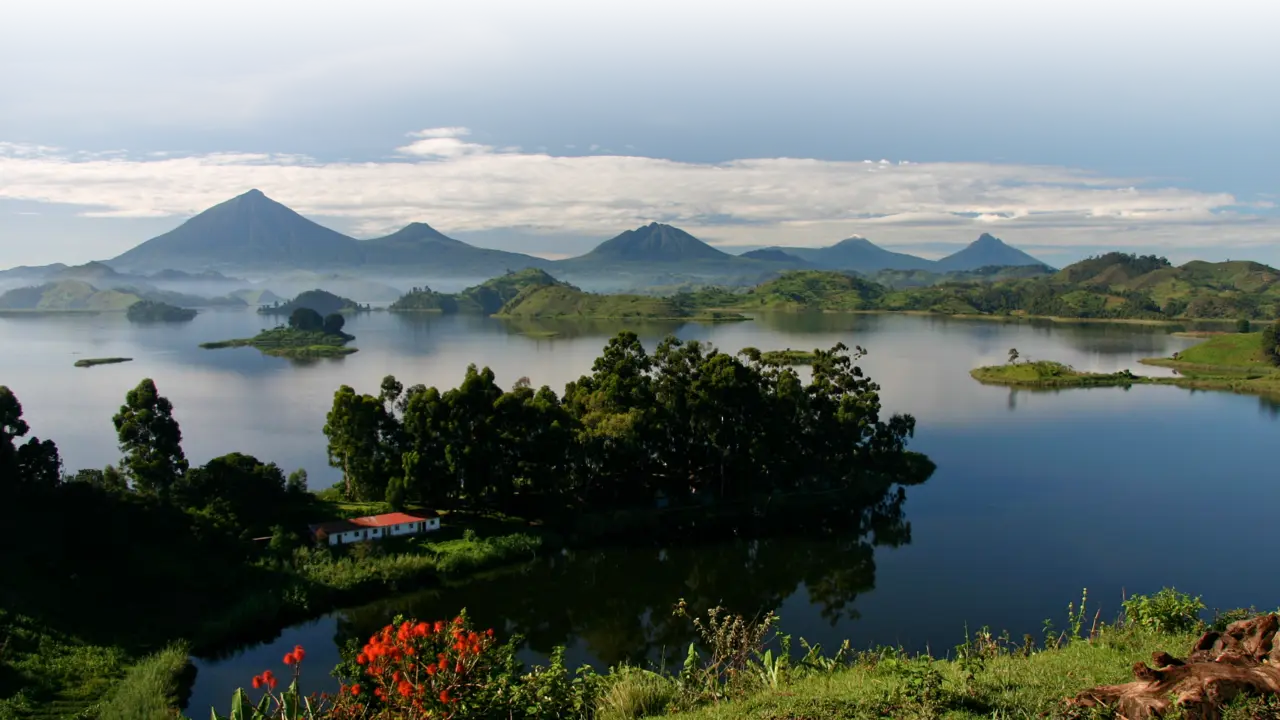
3. One hike in the Virungas simply isn't enough!
Another good reason to do golden monkey trekking in addition to a mountain gorilla trekking is that you get to spend more time in this beautiful environment, exploring a different areas of the forest!
The Virungas comprised 8 major Volcanoes. The bottom of the volcanoes is blanketed in pretty farmland, and you pass through these at the start of any trek to reach the trailheads leading into the forest zone. At some point on the trail you’ll also climb over a buffalo wall, which is used to keep the buffaloes away from farmers’ crops. It is all just culturally and scenically rewarding experience.
Remember too that you won’t just see gorillas or monkeys on your hikes – the Virungas are home to a wide variety of amazing animal species and numerous incredible birds. In fact, both Uganda and Rwanda are wildlife meccas.
Uganda, for example, has well over 1000 bird species! (Russia, for comparison’s sake, has just 810 bird species, and we don’t need to tell you how vastly bigger Russia is.)
The flora is also very beautiful. As previously mentioned, the farmland covers the lower slopes of the volcanoes. Above it, however, is a dense montane rainforest jungle, which is very tangled and lush and a worthy destination even if there wasn’t a single animal to be found. Furthermore, you often have incredible views over the landscape below when there are breaks in the canopy.
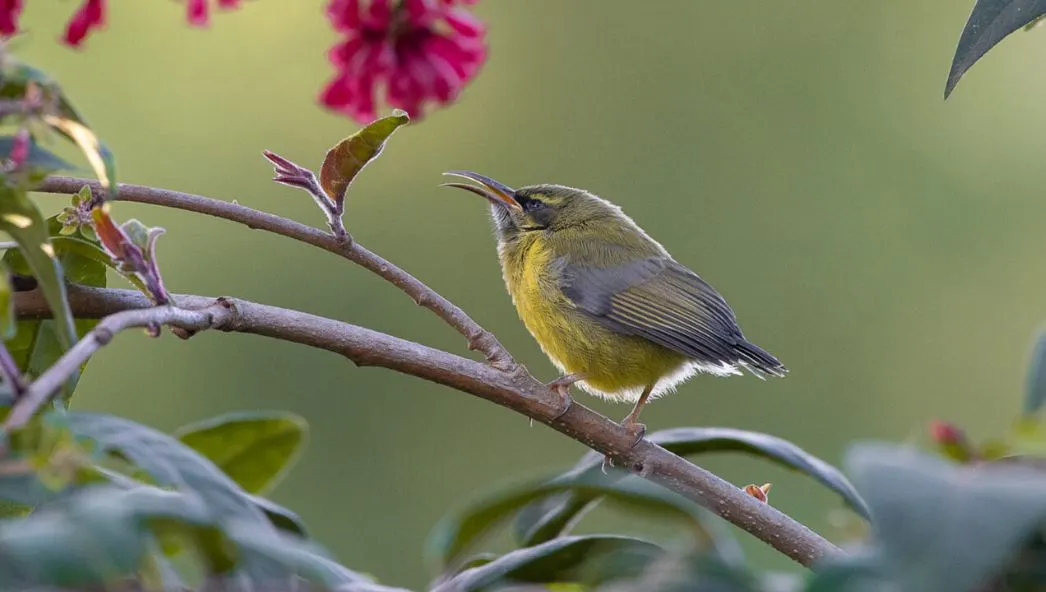
4. Golden monkey trekking is relatively cheap
Finally, a piece of good news is that golden monkey viewing in both Uganda and Rwanda does not break the bank in the same way as mountain gorilla trekking.
Cost of Golden monkey trekking in Uganda:
- US$60 for foreign non-residents
- US$50 for foreign residents
- UGX 40,000 for East African Citizens
Cost of Golden Monkey Habituation Experience in Uganda
- US$100 for foreign non-residents
- US$80 for foreign residents
- UGX 100,000 for East African Citizens
Cost of Golden monkey trekking in Rwanda:
- US$100 for foreign non-residents
- US$65 for foreign residents
- RWF 40,000 for East African Citizens
A gorilla trekking permit in Uganda, by contrast, cost $800 as of July 2024. A Rwanda gorilla permit cost $1,500. Thus, if you are able to fork out for a gorilla trekking trip, you might not feel too badly about tagging on another hundred bucks to enjoy another rare animal encounter.
What Does The Golden Monkey Trekking Fees Cover?
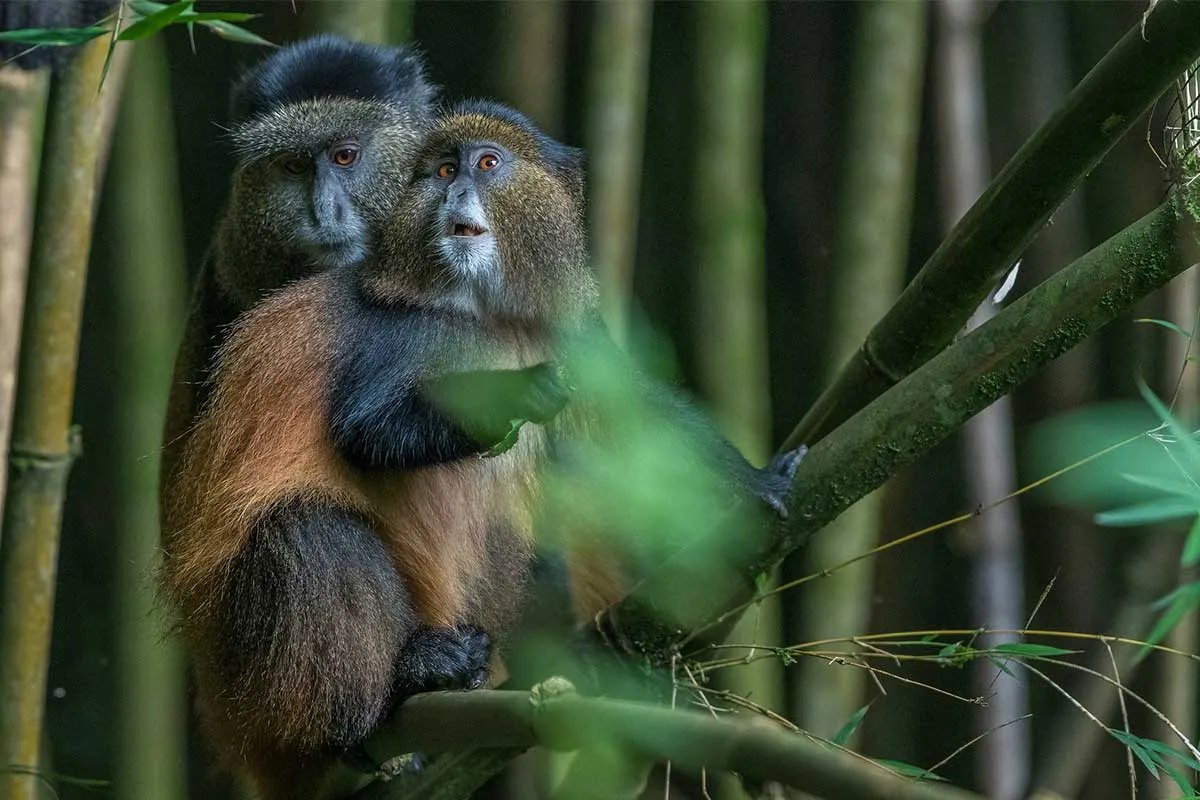
The fee for golden monkey trekking in Uganda and Rwanda covers your guide’s salary while also supporting the park’s conservation efforts.
Please note that tipping in Uganda and Rwanda is customary. Your trek guide, for instance, will be hoping for a tip. And this extra money you give as a tip really helps boost the income of people working in the tourism industry. It also boosts their confidence in sustainable tourism. We recommend budgeting around US$10 to 15 for this.
As mentioned, you also have an option to hire the services of a porter to help you as you hike. Porter costs are usually negotiable, but you should be able to budget at most $20 for a porter, including a tip. We strongly encourage you to use a porter if you are offered their services during your golden monkey trek, even if you feel you are fit enough to cope with the terrain and your daypack.
For a nominal amount of money, you’ll be offering a livelihood to many inhabitants of a nearby village. Porters are very often former poachers.
Without work and the ability to earn a living within primate conservation, many will be forced to return to finding and capturing or killing primates for the illegal wildlife-trafficking trade.
Remember, every legally employed person in Africa supports 7 to 9 other people. There can be no successful conservation without involving people as much as possible – so the more porters you can get on board, the better!
What does a golden monkey trek look like?
Similar to gorilla trekking and chimpanzee trekking, golden monkey trekking sees you go on a half-day, small-group, guided hike into the forest to find a troop and spend an hour in its company on a standard trek or four hours on the special habituation experience.
You meet your trek guide early in the morning at around 7.00 am for a briefing before heading off at around 8.00 am together to find your troop of golden monkeys.
The monkeys that you visit are habituated to human presence, which means they tend to be pretty relaxed. In fact, sometimes the monkeys are downright friendly; they have been known to come right up to you to touch your leg or stare into your camera lens.
Of course you should not try to touch a golden monkey, or attempt to pick one up. They are still wild animals. It is also important that you try not to prompt certain reactions from the monkeys.
You want to be a responsible traveller and minimize the impact of your visit. Also, you don’t want to risk spreading any communicable diseases to them.
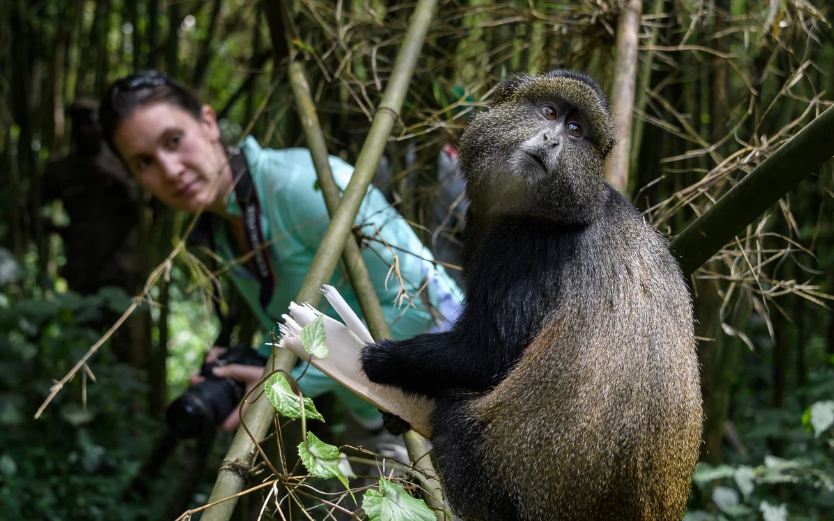
Do I need to be fit to Go Golden Monkey Trekking?
Yes, if you want manage a golden monkey trek comfortably; you need to be walking fit to.
Precisely how far or long you have to hike depends on the location of the monkey troop on the day that you are visiting. On the trek you are going to be walking first through farmland and then up and down narrow, steep, rocky and often muddy and sometimes slippery forest paths.
You won’t, however, climb as high as the moorland zone. Please note that you can hire the services of a porter for the trek if you like. Not only will your porter carry your backpack, but they will also hold your hand on tricky sections of the trail if you like.
So we recommend you give the trek a try even if you are nervous of slippery forest trails; just ensure you’re capable of hiking for a few hours at a reasonable pace.
What must I pack for Golden Monkey Trekking in Rwanda and Uganda?
Similarly to gorilla trekking, the most important items to pack for a golden monkey trekking are:
- A waterproof backpack
- Waterproof hiking boots or shoes
- A rain jacket or poncho
- Long hiking pants to prevent your legs getting scratched
- Sunscreen, sunhat and sunglasses
- Insect repellent
- Drinking water and energy giving snacks
- Camera
- Gardening gloves
- Gaiters to ensure your boots and legs stay dry.
- Trekking poles or a walking stick
As mentioned earlier, golden monkey trekking in Uganda and Rwanda can be done in the exact same area as mountain gorilla trekking. You are also not far from chimpanzee trekking destinations. So a safari to Rwanda or a safari to Uganda really is the ideal holiday for anyone who would love to enjoy more than just one incredible and rare animal encounter!
Questions about Golden Monkey Trekking?
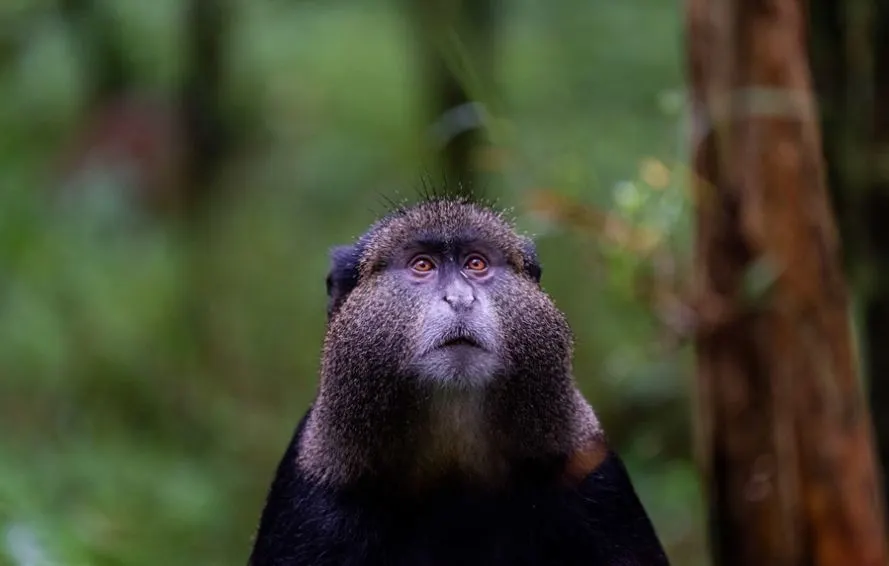
We will happily answer all your questions about golden monkey trekking in Uganda or Rwanda.
